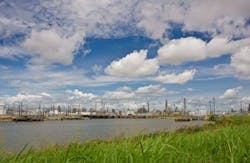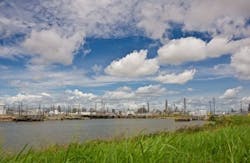Better analytics produces big savings for Dow Chemical
Big data, indeed: With 188 manufacturing sites in 36 countries, Midland, Mich.-based Dow Chemical collects a lot of raw data on its equipment, processes and products. But different plants' use of different information systems to track everything meant that Dow found itself struggling to make sense of the reams of information it was gathering.
"We stored data in all different places," says Lloyd Colegrove, director of data services for Dow. And that made it difficult—and time-consuming—for people outside a given site to access the numbers they needed to be able to respond quickly to emerging asset issues and identify asset performance patterns.
The delay inherent in a process that revolves around downloading data from multiple sources and getting it into spreadsheets "can be problematic," Colegrove says. It also discourages the kind of interaction across plants that can promote sharing of best practices.
Dow managers realized they needed a single-step way to access data from all sites, but they needed a solution that didn't involve creating a redundant parallel data space (inefficient) or replacing data-storage systems across the company (too expensive).
Dow turned to Northwest Analytics' NWA Focus EMI platform, a vendor-neutral tool that passes data obtained from different sources through a global analytics filter that allows for real-time apples-to-apples data comparisons.
"The data is all available now in one common space," says Colegrove. "You can have a broader spectrum of people arriving at the same conclusion, and everyone can very quickly agree on data to take action on."
Process performance dashboards can be shared across departments, notes Mary-Beth Seasholtz, a senior data scientist at Dow Chemical. And with better monitoring and easier control of manufacturing processes, she says, "When behaviors are contrary to agreed-upon metrics, the decision (to act) becomes data-driven."
This single, common view into processes and performance helps Dow avoid expensive manufacturing mistakes and failures, Colegrove says. For example, plant managers are able to more quickly pinpoint changes in a supplier's raw materials at a given site and then act to protect the catalyst, saving money and reducing unplanned downtime. "This will have significant impact in the long run on catalyst and filter activity and increase the lifetimes of certain aspects of the plant," says Colegrove. Dow Chemical estimates a return on investment of $1 million to $2 million per plant per year.
Plants across industries stand to realize significant savings through better data analysis, says Peter Guilfoyle, vice president of process improvement and strategy for Northwest Analytics. "There's a lot of unrealized potential in the data that (plants) currently have," he says.
There are non-financial benefits as well. The ability to make more-data-driven decisions helps eliminate finger-pointing, which can be another major barrier to cross-site and cross-function collaboration.
And bringing more experts from different sites into asset-management discussions can help drive operational efficiencies, Colegrove says. "This was interaction that was not necessarily common before we brought this tool into place," he says.
At the plant level, employees' access to different levels of data varies to some extent based on their roles. Operations employees, for instance, have access to dashboards that allow them to meet the immediate needs of the plant. Improvement engineers have access to dashboards designed for higher-level planning.
Colegrove says what he's aiming for next in Dow's use of this analytics tool is greater granularity and enhanced search functionality. He envisions the platform being able to recognize, with minimal user input, the specific data for which a user is searching—similar to how a search tool such as Google or Kayak works when a user is looking for information to plan a vacation. "I would like that kind of functionality within plant operations," he says.
In terms of optimizing the use of data, says Colegrove, "We're all pretty early in this and there's a long road to travel down." But there are opportunities through today's analytics tools not only to help realize efficiencies (and thus savings) but also make operations safer and more respectful of the environment. That's an exciting prospect, according to Colegrove. "My overarching goal," he says, "is to improve my company's integration of knowledge and data."

